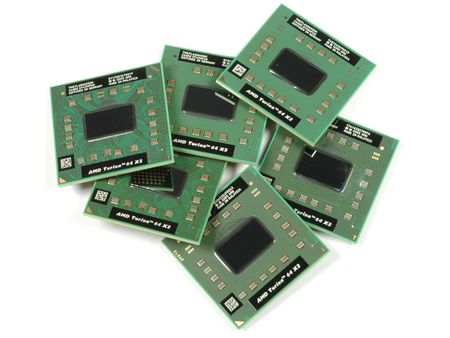Mobile CPU Chart Update and Forecast
Mobile CPU Charts Updated
Our CPU Charts, have listed current and many outdated processors for easy comparison for several years. However, at the beginning we could not include mobile processors for technical reasons. While state-of-the-art desktop motherboards will typically support the entire desktop processor portfolio from AMD or Intel, it had been very difficult to find motherboards that support Intel’s socket 479 and especially, socket S1 AMD mobile processors. But then, at last, we found a motherboard that could accommodate the AMD Turion 64 X2, so we could compare it directly against Core 2 Duo mobile CPUs as well as other AMD and Intel processors in our charts.
All of our Interactive Charts are based on platforms that allow us to test various components as they become available. Our 3.5” Hard Drive Charts are the best example: They are based on our reference storage test system that we used for almost every storage review. They have also not undergone major changes for years in order to offer a more accurate comparison between the different hard drives.
While all desktop-type components such as processors and graphics cards can easily be tested on desktop platforms, testing mobile components is not as simple due to limited platform options. It’s certainly possible to use a single laptop to test a large range of AMD or Intel processors. However, it would not be possible to use the same desktop hard drive and desktop graphics solutions we utilized for our desktop processor testing for mobile devices. Finding an AMD and an Intel laptop that could handle components such as hard drives and graphics cards that were similar enough to each other was even more difficult.
So-called mobile-on-desktop solutions (MoDT) turned out to be the solution. These desktop-type components, which are based on mobility-optimized and thus energy-efficient hardware, have been around for several years now. However, they have mostly been designed for Intel processors because of Intel’s one-stop Centrino platform strategy. Although many people still believe that Centrino refers to a processor, it is actually the name for the entire platform package consisting of a mobile processor, a mobility chipset and a wireless unit. Some manufacturers such as Aopen even run dedicated websites on the topic. Please check out our articles Aopen releases Core Duo to the desktop and Quick and Quiet: Pentium D Desktop Boards by Aopen and DFI for more details.
The situation on the AMD side has been tricky, because the firm had refused to be a chipset provider for many years. As a consequence, the chip maker had to rely on third-party chipset solutions from ATI, Nvidia, SiS or VIA. Therefore, the product selection of motherboards for AMD’s mobile socket S1 has been minimal, to say the least. Motherboards typically did not support an x16 PCI Express slot for graphics. Things changed with the acquisition of ATI, and AMD has now fully acknowledged the importance of offering entire platform solutions instead of only single components.
The solution we found comes from the German vendor Kontron, and it’s a MiniITX motherboard based on AMD’s 690 chipset. The KT690/mITX is an industrial-type motherboard that offers an impressive level of component integration, and it allowed us to finally compare Intel’s Core 2 Duo mobile lineup to the AMD Turion 64 X2 family based on the same set of test components.
Get Tom's Hardware's best news and in-depth reviews, straight to your inbox.
Current page: Mobile CPU Charts Updated
Next Page AMD’s New Mobile Platform “Puma”